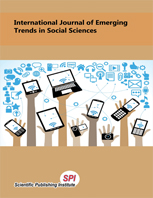Dual exchange rate systems and food inflation in Nigeria: Does Unifying exchange rate matter?
DOI:
https://doi.org/10.55217/103.v18i1.906Keywords:
ARDL, Exchange rate, Government, Inflation, Monetary.Abstract
Access to foreign exchange (forex) has been a persistent challenge in Nigeria, leading to calls for exchange rate unification as a potential solution. This study examines the impact of dual exchange rates on food inflation in Nigeria. The study employs the Autoregressive Distributed Lag (ARDL) model to analyze the relationship between various exchange rate measures and food inflation in Nigeria. Key variables include the Bureau De Change (BDC) exchange rate, unified exchange rate, exchange rate differentials, and the official exchange rate. The results indicate that the BDC exchange rate, unified exchange rate, and exchange rate differentials have a positive and significant impact on food inflation in both the short and long run. In contrast, the official exchange rate negatively affects food inflation but remains statistically insignificant over both periods. This implies that rising exchange rate differentials contribute to food price increases, albeit moderately under a unified exchange rate system. The study underscores the importance of exchange rate unification in stabilizing food prices. However, for effectiveness, legal backing and regulatory enforcement are necessary. Policymakers should implement forex market interventions to reduce exchange rate volatility, improve naira stability, and mitigate food inflation.


